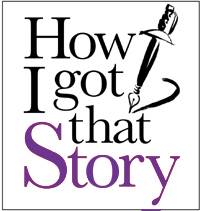The 2008 AltWeekly Award winner for Arts Criticism talks about his work.
Jeffry Cudlin knows that his home city, Washington, D.C., isn’t the hippest place in the world when it comes to his passion. “D.C. is a pretty funny place for the arts,” the art critic for Washington City Paper says. “Somewhere in the background, there’s always hand-wringing over the fact that we’re not New York.”
Coming out of the University of Maryland with an MFA in art, Cudlin spent his time teaching art theory before he got his current gig. Moving into journalism, he learned to tone down his artsy jargon. When he’s not discussing art, he’s usually painting.
How did you get into art criticism?
I’ve always been something of a writer — as an undergrad, I did a lot of editing for various publications at the University of Virginia. I’m an art-history nerd, too.
I first moved to the D.C. area in 1998 or thereabouts, [and] I always admired Glenn Dixon’s writing for the Washington City Paper. Dixon wrote reviews that were smart, dense with cross-disciplinary references, and irreverently funny, all at the same time.
After I finished my thesis and started teaching at the University of Maryland, I finally got it into my head that maybe I could submit something to the City Paper. Dixon had left for the Washington Post — for a tenure that would turn out to be pretty short.
So I submitted a review of Jim Dine’s show at the National Gallery. Then-arts editor, Leonard Roberge, sent me an extensive edit — basically challenging me to completely rewrite the piece, and stripping out a lot of art-world jargon.
Really, it was Leonard who quickly schooled me on how to write to an alt-weekly audience and put me in line with the CP stylebook — he was also an art-history nerd, with a master’s in contemporary/modern art. He cared passionately about the stuff I was covering.
In the piece on Mingering Mike and Wolfgang Tillmans, you write about two wildly different artists. What inspired you to write about the two of them together?
At the time, I was really just trying to find a way to shoehorn more gallery coverage into the paper — gallery pieces tended to be picks, running at 250 words. That said, I do think there’s a bit of a linkage between the two: Tillmans seems to be an inauthentic prankster, using casual snapshot aesthetics in his photography and pinning up pictures with scotch tape and binder clips, or playing with/making fun of heroic postwar abstraction, making homoerotic jokes using images of military men, etc. Yet Tillmans’ work has at its heart a definite moral compass, a strong ideology about personal freedom and contemporary culture. So here are two guys who on the outside seem to be parodists or pranksters, but who both are expressing some fairly heavy content.
When you critique an artist’s work, like in your “Squaresville, U.S.A.” piece with Edward Hooper, are you knowledgeable about the artist’s entire oeuvre, or do you just consider what will be presented at the exhibit?
Well, you have to know about what isn’t in the show, too, in terms of evaluating how effective the curator was. Obviously I’m not going to write at length about works not actually in the show — but I will mention unfortunate or misleading omissions.
Your reviews aren’t scathing, even if you think the project wasn’t a complete success as in the show, “The Mod that Failed.” What are your feelings about critics who feel their major role is simply to bash people’s work?
If a show is truly awful, if it really has no redeeming value whatsoever, why would you write about it? Writing about a show validates it: You are proclaiming that this show is somehow an important contribution to the conversation overall, even if it’s flawed. The modernism show was a mess, but it was important because of the sheer array of objects it presented and the broader points about the political legacy of modernism that the curators seemed to be bypassing.
I am very critical, though, and this can make people upset. But I feel that you have to pick apart a show and have high expectations for it. This is the only way you can keep a local art scene from being provincial and self-satisfied.
What would you say is your main role as an art critic?
My role is to make people understand how important visual culture is to daily life — how avant-garde gallery culture is basically the leading edge of culture in general, a sort of proving ground where artists try to figure out what the present moment is actually about. I also want people to understand that this seemingly complex stuff is meant to be experienced and enjoyed. This city is full of free art museums. It’s a crime not to actually use them.
Read the pieces that garnered Cudlin a first-place finish in Arts Criticism (circulation 55,000 and over):
Squaresville, U.S.A.
Reality Checks
The Mod That Failed
Part of the 2008 “How I Got That Story” series, in which Academy of Alternative Journalism fellows reveal the processes of the writers and editors who won first-place AltWeekly Awards. These interviews also appear in Best AltWeekly Writing and Design 2008.

